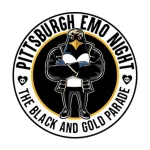Sum 41 emerged from the suburban landscape of Ontario, Canada, at the tail end of the 20th century to become one of the most commercially successful and musically dynamic bands of the pop-punk explosion. With a career spanning over two decades, the band distinguished itself through a unique fusion of skate punk energy, pop-punk hooks, rap-rock bravado, and a progressively heavier alternative metal edge. Their journey is marked by worldwide multi-platinum success, significant lineup changes, and a sonic evolution that defied simple categorization, cementing their place as an enduring and influential force in modern rock music.
Formation and Early Era
The foundation of Sum 41’s legacy was built on youthful energy and a shared ambition to break out of their local scene. This period saw the band forge its identity, develop its initial sound, and secure the record deal that would catapult them onto the global stage.
Origins and Formation
Sum 41 was formed in Ajax, Ontario, in 1996. The band’s name is famously derived from the fact that its founding members decided to form the group on the 41st day of their summer vacation. The initial lineup consisted of vocalist and rhythm guitarist Deryck Whibley, lead guitarist Dave “Brownsound” Baksh, bassist Jason “Cone” McCaslin, and drummer Steve “Stevo” Jocz. Whibley and Jocz were high school friends from competing bands who joined forces, with McCaslin and Baksh joining shortly thereafter to solidify the classic quartet. Drawing inspiration from a diverse range of artists including NOFX, Beastie Boys, and Iron Maiden, the band developed a high-energy live show. They honed their craft by playing local venues and recording homemade demo tapes, one of which, Rock Out with Your Cock Out (1998), gained them early local attention. Their relentless self-promotion, which included sending videos of their antics and performances to record labels, eventually paid off.
Early Discography
After a fierce bidding war among several labels, Sum 41 signed with Island Records in 1999. Their official debut came in the form of the EP Half Hour of Power, released on June 27, 2000. This release served as a potent introduction to their signature sound: a hyperactive blend of fast-paced punk rock and accessible pop melodies, peppered with elements of hip-hop. Tracks like “Makes No Difference” and “Summer” showcased their knack for writing catchy hooks while maintaining a raw, unpolished energy. While not a massive commercial hit, Half Hour of Power was a critical first step, establishing the band’s musical identity and building an initial fanbase. The EP was a clear statement of intent, laying the groundwork for the monumental success that was to follow and distinguishing them from their peers with a sound that was both familiar and uniquely their own.
The Mainstream Breakthrough
The turn of the millennium coincided with a massive surge in the popularity of pop-punk, and Sum 41 was perfectly positioned to ride this wave. Their debut full-length album transformed them from a promising upstart act into international rock stars, defining the sound of an era for millions of listeners.
Pivotal Album(s) and Lineup Changes
The band’s breakthrough album was unequivocally All Killer No Filler, released on May 8, 2001. During this period, the lineup of Whibley, Baksh, McCaslin, and Jocz remained stable, a crucial factor in their tight, energetic delivery. The album was a masterclass in early 2000s rock, propelled by its lead single, “Fat Lip.” The track was a cultural phenomenon, notable for its unconventional structure that seamlessly blended punk rock verses, a rap-rock bridge, and a soaring metal-inflected chorus. This genre-mashing approach, combined with a memorable music video that received saturation airplay on MTV’s Total Request Live, made “Fat Lip” an anthem for a generation. Subsequent singles “In Too Deep,” a more straightforward pop-punk classic, and “Motivation,” a driving skate punk track, further solidified the album’s status as a landmark release. All Killer No Filler captured the zeitgeist of the era, packaging youthful rebellion and suburban ennui into a collection of perfectly crafted, high-octane songs.
Achieving Critical and Commercial Success
The success of All Killer No Filler was immense and immediate. The album was a commercial juggernaut, achieving multi-platinum status in Canada (3x Platinum), the United States (Platinum), and the United Kingdom (3x Platinum). It established Sum 41 as a leading act in the pop-punk movement alongside contemporaries like Blink-182 and Good Charlotte. The band embarked on extensive world tours, including a coveted spot on the Vans Warped Tour, where their energetic and often chaotic live performances became legendary. They earned critical acclaim for their musical proficiency, particularly Dave Baksh’s intricate and metal-influenced guitar solos, which set them apart from many of their three-chord punk peers. This period cemented their global reputation and provided them with the commercial freedom to experiment with their sound on subsequent releases.
Musical Evolution and Key Events
Following their explosive arrival, Sum 41 embarked on a period of significant artistic growth and internal challenges. The band consciously moved to shed the “pop-punk” label, exploring darker themes and heavier musical territory, a journey influenced by both artistic ambition and life-altering external events.
Mid-career Albums and Sonic Shifts
Sum 41’s sophomore album, Does This Look Infected? (2002), signaled a deliberate shift toward a heavier and more aggressive sound. While still rooted in punk rock, tracks like “The Hell Song” and “Still Waiting” incorporated more elements of alternative metal and melodic hardcore. The lyrics became more cynical and confrontational, moving away from the lighthearted themes of their debut. This evolution reached its apex with Chuck (2004). The album’s title and direction were profoundly influenced by the band’s experience filming a documentary for War Child Canada in the Democratic Republic of Congo. During their trip, they were caught in a firefight and were ultimately evacuated by a UN peacekeeper named Chuck Pelletier. The traumatic event led to a much darker, more mature, and musically complex album. Chuck featured some of the band’s heaviest work to date, blending intricate metal riffs with raw punk intensity on songs like “We’re All to Blame,” and earned the band a Juno Award for Rock Album of the Year.
Hiatus, Reunions, or Significant Member Departures
The band’s intense creative period was followed by significant internal strife. In 2006, lead guitarist Dave Baksh announced his departure, citing creative differences and a desire to focus on his classic heavy metal project, Brown Brigade. His exit had a palpable impact on the band’s sound. The subsequent album, Underclass Hero (2007), saw a return to a more pop-punk oriented style, with Whibley handling all guitar duties. Following a lengthy tour cycle and a period of writer’s block for Whibley, the band released Screaming Bloody Murder in 2011, an album noted for its dark lyrical content reflecting Whibley’s personal struggles. The period of instability continued when founding drummer Steve Jocz departed amicably in 2013, leaving Whibley and McCaslin as the only remaining original members.
Modern Era
After a period of uncertainty and personal turmoil for its frontman, Sum 41 entered a new phase defined by resilience, reunion, and a definitive return to the heavy, intricate rock sound that had become their hallmark.
Recent Albums and Contemporary Activity
The modern era of Sum 41 began with a dramatic comeback. In 2014, Deryck Whibley was hospitalized for severe alcohol-related health issues, an event he publicly documented as a catalyst for his sobriety and renewed focus on music. In 2015, the band’s trajectory shifted positively with the surprise announcement that Dave Baksh was rejoining the group. Bolstered by new drummer Frank Zummo, the revitalized lineup released 13 Voices in 2016. The album was a triumphant return to form, characterized by its heavy guitar work, complex arrangements, and lyrical themes of struggle and redemption. They continued this heavy trajectory with 2019’s Order in Decline, an album noted for its politically charged lyrics and aggressive alternative metal sound. In May 2023, Sum 41 made the monumental announcement that they would be disbanding following the release of one final album and a concluding world tour. That album, the ambitious double LP Heaven :x: Hell, was released in March 2024. The record was presented as a swan song encapsulating their entire career, with the Heaven side dedicated to their classic pop-punk sound and the Hell side exploring their heavier metal leanings.
Cultural Impact and Connection to the Scene
Sum 41’s legacy extends far beyond their record sales. They were a pivotal band that helped define the sound and aesthetic of mainstream rock in the early 2000s, and their music continues to hold a special place in the hearts of fans who grew up with their anthems.
Influence on Their Primary Genres
Sum 41’s primary influence lies in their role as a bridge between genres. They introduced a generation of pop-punk fans to the technicality and aggression of alternative metal and classic punk. Dave Baksh’s guitar solos brought a level of musicianship to the genre that was not commonplace, inspiring countless young guitarists. Their ability to blend seemingly disparate styles—punk, pop, rap, and metal—into cohesive, chart-topping hits demonstrated a musical versatility that expanded the boundaries of what a “punk” band could be. They proved that it was possible to maintain punk rock authenticity while achieving massive commercial success, influencing subsequent bands in the pop-punk, alternative rock, and even post-hardcore scenes.
Relevance in Nostalgia Events like Emo Night Pittsburgh
The music of Sum 41 is a cornerstone of early 2000s nostalgia, making it an essential component of events that celebrate the era’s culture. Their biggest hits are anthems that instantly transport listeners back to a specific time and place. For this reason, the band’s catalog is a guaranteed highlight at any event focused on the pop-punk and emo explosion of the millennium. The high-energy, anthemic quality of songs like “Fat Lip,” “In Too Deep,” and “The Hell Song” makes them staples for DJs and a massive draw for attendees. At an event like Emo Night Pittsburgh, the inclusion of Sum 41 is not just expected; it’s fundamental. A proper Pittsburgh Emo Night celebration would feel incomplete without the driving guitars and defiant choruses that Sum 41 contributed to the alternative rock landscape, ensuring their music continues to resonate with new and old fans alike.
Frequently Asked Questions About Sum 41
- What is the origin of the band’s name, Sum 41?
The band formed on the 41st day of their summer vacation in 1996, hence the name Sum 41.
- What is Sum 41’s most famous song?
While they have numerous hits, “Fat Lip” from the 2001 album All Killer No Filler is widely regarded as their most famous and iconic song. It was their breakout single and remains a defining anthem of the early 2000s pop-punk era.
- What genre of music does Sum 41 play?
Sum 41 is most often classified as pop-punk and skate punk, especially in their early work. However, their sound evolved significantly to incorporate punk rock, alternative rock, alternative metal, and melodic hardcore, making them a multi-faceted rock band.
- Is Sum 41 still a band?
In May 2023, Sum 41 announced that they would be disbanding. They released their final album, Heaven :x: Hell, in March 2024 and are embarking on a final headlining world tour, “Tour of the Setting Sum,” expected to conclude in 2025.
- Who are the key members of Sum 41?
The “classic” and most commercially successful lineup consisted of Deryck Whibley (vocals, guitar), Dave “Brownsound” Baksh (lead guitar), Jason “Cone” McCaslin (bass), and Steve “Stevo” Jocz (drums). The final lineup consists of Whibley, Baksh, McCaslin, guitarist Tom Thacker, and drummer Frank Zummo.

